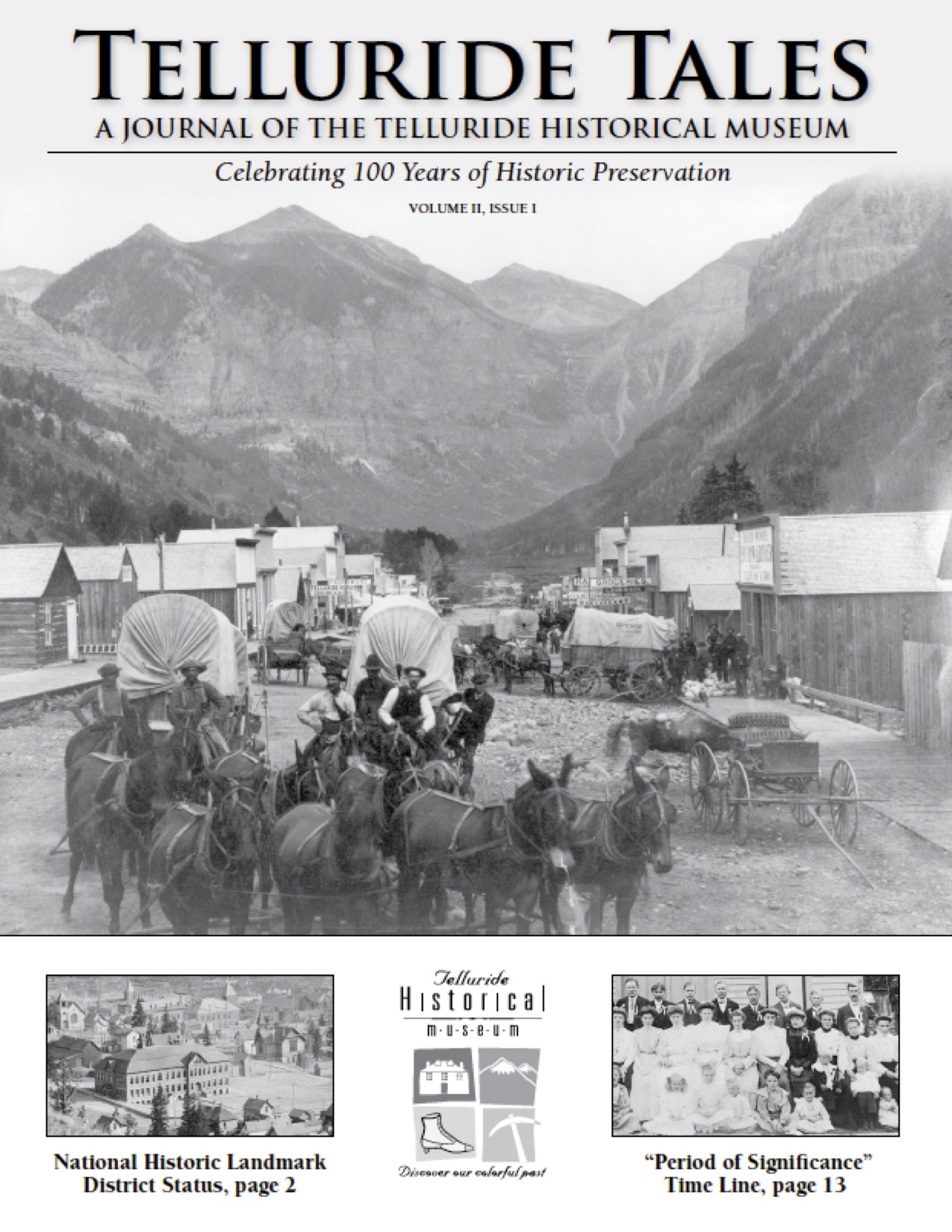
11 Apr TELLURIDE MUSEUM: “TELLURIDE TALES” OUT THIS MONTH
 Telluride Historical Museum’s annual journal, “Telluride Tales,” explores historic preservation in Telluride
Telluride Historical Museum’s annual journal, “Telluride Tales,” explores historic preservation in Telluride
In 1977, trumpet legend Dizzy Gillespie trumpeted his thoughts on Telluride:
“If this ain’t paradise, heaven can wait.”
He was not (and is not) alone in his enthusiasm.
Before and since, many have echoed similar praise for this town. But why? What is at the heart of a universal enduring fascination with Telluride? At the top of a list of reasons why we stay, visit, stay and return to the region has to be the obvious connection to Telluride’s past.
Woven into the fabric of the town as we know it today, we see buildings and homes with stories and memories stretching back more than a century. Stories about how Telluride sprung up as a new mining town at the end of the California gold-rush of 1849. Tales of the contentious and painful resettlement of the Ute tribes that followed. The stories of the unfaltering optimism and hard-work that are part of the larger American story of westward expansion of the nineteenth century. We see all those things as we walk along the wide expanse of Columbia Avenue framed by the historic and the modern. We feel it below the towering mountains that have inspired the hope of prospectors of history and modern times alike.
 In 1987, after a survey of historic buildings in Telluride, a “period of significance” from 1878 to 1913 was established. As we celebrate the 100th anniversary of the end of that period of dramatic growth this year, we pause to take a closer look at how and why many of Telluride’s historic homes, commercial buildings, and even brothels outlived the town’s reinvention of itself. We also recognize that while we have preserved much of the fabric of those times, much more has changed since. It is the spirit of that change historic preservation at its best embodies.
In 1987, after a survey of historic buildings in Telluride, a “period of significance” from 1878 to 1913 was established. As we celebrate the 100th anniversary of the end of that period of dramatic growth this year, we pause to take a closer look at how and why many of Telluride’s historic homes, commercial buildings, and even brothels outlived the town’s reinvention of itself. We also recognize that while we have preserved much of the fabric of those times, much more has changed since. It is the spirit of that change historic preservation at its best embodies.
The 2013 volume of “Telluride Tales” explores the ideas and often contentious practice of historic preservation in Telluride. Also included are interviews with long-time locals reflecting on change and development in Telluride after the end of the mining boom. There is an introduction to HARC (Historic Architectural Review Commission), a ever-evolving, public committee that puts the desire for historic preservation into practice. Former mayor and county commissioner Elaine Fischer sums up as part of her interview in the journal:
“How do you balance the natural swings of growth and change with the history and integrity of a community? What kind of community do we want? These were the questions we [Telluride] asked ourselves – and put into practice.”
There are many facets to historic preservation in Telluride that are not reflected in the account. And we offer no specific judgements about the value and practice of historic preservation. Our hope is that the stories in the journal help shape a much-needed discussion and trigger reflections about how and why we preserve what we do.
“Telluride Tales” is scheduled to be available at the Museum store this month, online at www.telluridemuseum.org, and at various local retailers.


Sorry, the comment form is closed at this time.